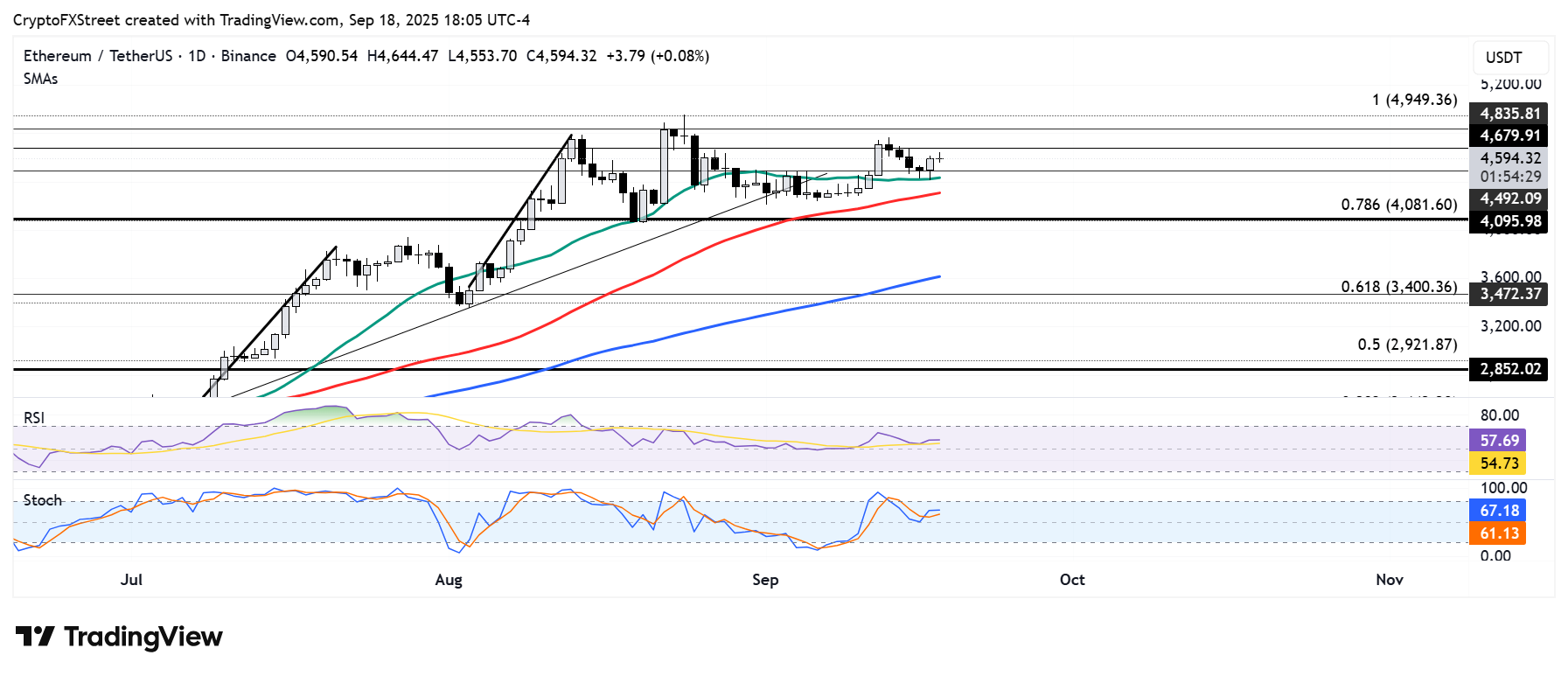Ethereum Price Forecast: ETH bounces off 20-day SMA as Vitalik Buterin defends validator queue design
Ethereum price today: $4,590
- Vitalik Buterin says that the validator queue design enables Ethereum to remain trustworthy.
- The Ethereum validator exit queue waiting time has spiked to 43 days, drawing industry criticism.
- ETH bounced off the 20-day SMA again but is facing resistance near $4,600.
Ethereum (ETH) trades near $4,600 on Thursday as co-founder Vitalik Buterin defended the network's validator queue design amid a spike in the waiting time for investors unstaking their assets.
Vitalik Buterin defends Ethereum's validator queue design
Ethereum co-founder Vitalik Buterin responded to critics of the protocol's validator queue design, clarifying that while it is not optimal, it helps maintain trust, especially from the perspective of less active network participants.
"Staking is about taking on a solemn duty to defend the chain. Friction in quitting is part of the deal. An army cannot hold together if any percent of it can suddenly leave at any time," wrote Buterin in a Wednesday X post.
"That's not to say that the current staking queue design is optimal, rather that if you reduce the constants naively then that makes the chain much less trustworthy from the PoV of any node that does not go online very frequently."
The response follows a spike in the wait time for validators unstaking their assets, reaching 43 days, with the number of ETH in the exit queue jumping to 2.48 million ETH. This represents about 7% of the total 35.6 million ETH in staking contracts, according to data from Validator Queue.
The staking/validator queue limits the amount of ETH that can be staked or unstaked on the Ethereum network at a specific time to stabilize its proof-of-stake consensus model.
The long queue attracted criticism from a few in the crypto industry, who called Ethereum clunkier and slower compared to other Layer 1 chains. However, others defended the design, comparing the exit queue waiting time to removing risk capital from a bank.
The huge spike in exits occurred on September 9, after Ethereum infrastructure provider Kiln exited its validators as a precautionary safety measure following an NPM supply chain attack and exploit of crypto exchange SwissBorg.
The large exit does not impact the normal functionality of Ethereum, noted Benjamin Thalman, Senior Analyst at staking provider Figment, in a blog post on Monday. "Ethereum is operating exactly as intended — limiting how quickly validators can enter and exit the active validator set is an important security precaution," wrote Thalman.
He explained that a majority of the coins in the exit queue will likely be restaked under new validators, potentially burdening the entry queue in the days to come.
Sygnum analysts also previously clarified that the surge in validator exits is largely spurred by investors rebalancing their looped staked holdings rather than profit-taking.
Ethereum Price Forecast: ETH bounces off 20-day SMA but faces pressure near $4,600
Ethereum experienced $59.8 million in futures liquidations over the past 24 hours, with $37.4 million attributed to short liquidations, according to Coinglass data.
ETH bounced off the 20-day Simple Moving Average (SMA) for the second consecutive day and rose above the $4,500 resistance over the past 24 hours. The move comes as signs of risk-on sentiment resurfaced after the Federal Reserve (Fed) cut interest rates by 25 basis points on Wednesday.

ETH/USDT daily chart
However, the top altcoin faces potential selling pressure near the $4,670 resistance. A firm daily candlestick close above this level could push ETH to tackle the $4,835 resistance.
On the downside, ETH could find support around the $4,300-$4,400 range, which is strengthened by the 20 and 50-day SMAs.
The Relative Strength Index (RSI) and Stochastic Oscillator (Stoch) are above their neutral levels, indicating a dominant bullish momentum.

